
© Foteini Christofilopoulou. (Click image for larger version)
Gala Flamenca La Chana
Goddess of Compás
★★★★✰
London, Sadler’s Wells
21 February 2018
Gallery of pictures by Foteini Christofilopoulou
www.facebook.com/lachanadocu
wew.sadlerswells.com
Women have so dominated this year’s Flamenco Festival that it has taken until the fifth production (of seven) on the main stage at Sadler’s Wells before a man has danced. And, even so, here in the Gala Flamenca – traditionally the centre piece of the festival – despite the presence of two outstanding male bailaors, it was still the presence of a woman that commanded proceedings even though she danced, sitting down.
Rarely have I witnessed a prolonged standing ovation midway through a show but it happened here to acknowledge the legendary gypsy bailaora from Barcelona, known as La Chana. Now aged 71, and courageously combatting mobility issues, La Chana is very much the queen of flamenco comebacks.

© Foteini Christofilopoulou. (Click image for larger version)
She is self-taught, practicing secretly every day as a child (behind a cemetery wall, in her slippers) until her Uncle, the flamenco guitarist, El Chano (from whom her flamenco name is derived) encouraged her to come from ‘behind the wall’ and dance. La Chana’s golden age was in the mid-60s, during which time her fame brought her a stunning dancing cameo in Peter Sellers’ film, The Bobo (watch it on YouTube, it’s scintillating). But, a controlling and possessive husband caused a premature retirement from which there were occasional returns (in a 1977 TV special starring Cliff Richard and Demis Roussos, for example) but for 30 years – from the mid-80s– La Chana was rarely seen.
All that changed with Lucija Stojevic’s award-winning film, La Chana, made in 2016, which purported to show the preparations for the final performance of this great Catalan dancer (most great bailaoras come from further along the Mediterranean Coast, in Andalusia). Of course, it was not to be her final performance, but the precursor to a rejuvenated septuagenarian career – dancing while seated, her new genre celebrated by a set bedecked with hanging chairs – and as she said, here at Sadler’s Wells, “if God is willing”… neither will these three shows be the end. “I will be back,” said she, defiantly, in amongst a repeated, emotional proclamation of her love for this theatre and London (and, perhaps, the late Peter Sellers).
Even with frailty and impaired mobility, La Chana’s percussive footwork and elaborate upper body gestures were powerful, the compás of her solo, in a hybrid Soleá por bulería suggesting the pace of a bulería but in a slightly mellowed form (dancing a faster version of the soleá with the same rhythmic structure as the alegrías). La Chana improvises everything – as she always has – and I doubt any two performances would be the same. It was a privilege to see and hear her.
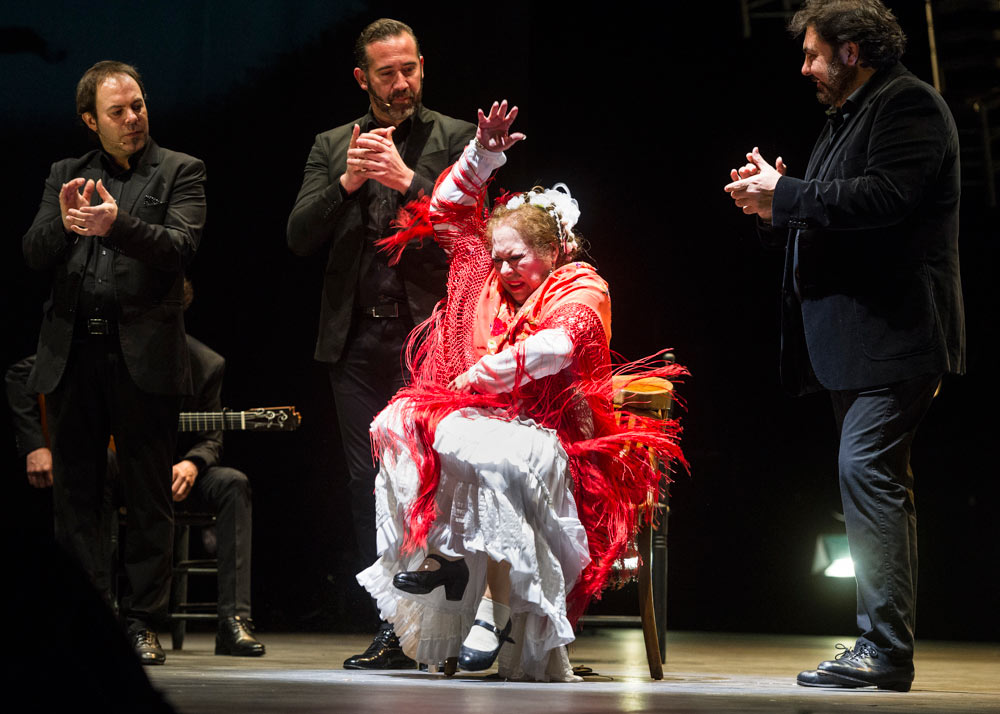
© Foteini Christofilopoulou. (Click image for larger version)
Although the Gala was shaped around La Chana (her real name, by the way, is Antonia Santiago Amador) she had the finest of supporting casts. Antonio Canales is another legendary dancer, now approaching 60, but still performing with charisma and passion, here dancing a well-paced soleá, punctuated by emphatic rhythmic indulgences. Canales is also the dandiest of male flamenco dancers, accentuating trademark dark suits with rock-star long hair, colourful waistcoats and – for the finale – a long embroidered Regency-style coat that would have done Beau Brummell proud.
El Farru – also sometimes known as Farucco – is a part of Los Farruco clan, the grandson of Farucco (one of the most significant flamenco dancers in history), the son of flamenco artists and the brother of Farruquito, nowadays considered to be one of the greatest gypsy bailaors. El Farru had the honour of the final solo, named in honour of his family; a seguiriya, one of flamenco’s most challenging dances with a thrilling uneven compás. Farru is an elegant, upright dancer with little flexibility in his rigid torso; his genius comes from imperceptible footwork. Each foot rises and falls by mere millimetres, matching the complex rhythms of the seguiriya set by the mood and tempo of the song. From a distance, it may have seemed that Farru was doing very little but, viewed at close quarters, the virtuosity in the tiny but prolific movements of his mighty zapateado (footwork) was extraordinary.
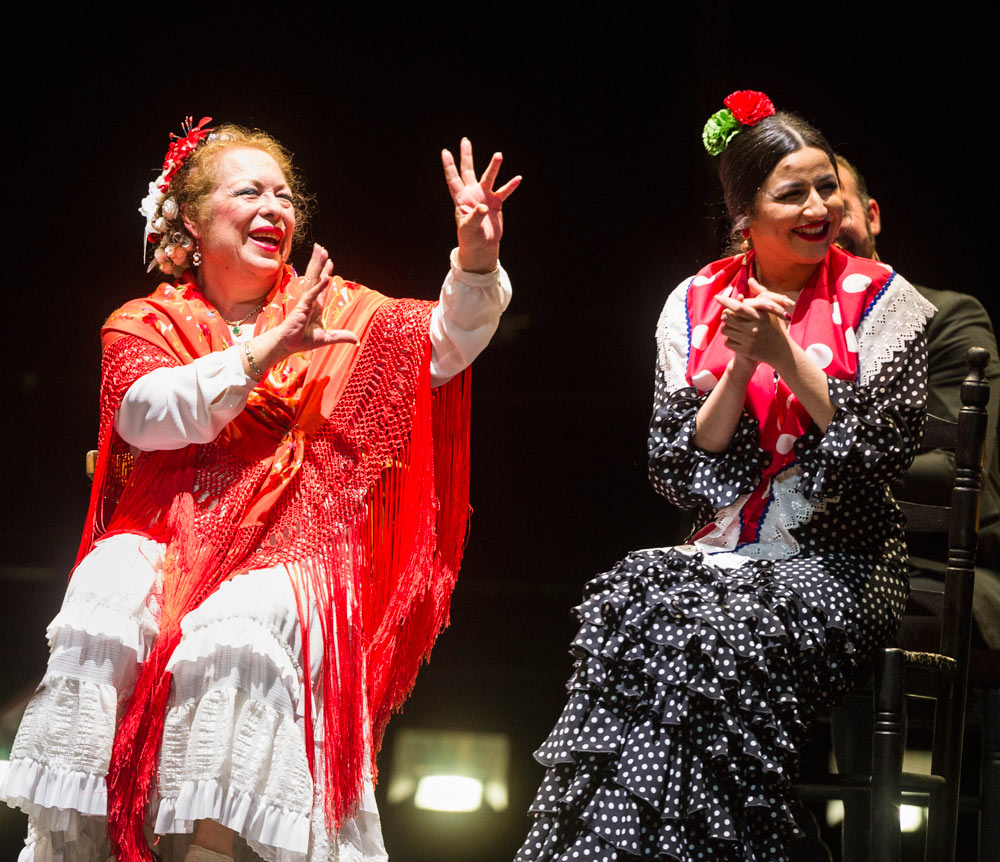
© Foteini Christofilopoulou. (Click image for larger version)
Gema Moneo warmed the audience up with a rarer flamenco form in the bambera, performing the eponymous Saga de los Moneo while Antonio Campos, David El Galli and Alfredo Tejada were an outstanding, diverse trio of singers, opening with a rousing Cante Alante in alegrías form and flanking La Chana, providing the incentive for her soleá por bulería with their combined cante and palmas. Paco Iglesias and Juan Campallo accompanied the performance throughout on guitar, earning their combined place in the spotlight with the gentle instrumental interlude of A dos voces.
The Gala was directed by Ángel Rojas, an innovative dancer and director, best known here for his work with Carlos Rodríguez (Rojas and Rodríguez) and the Nuevo Ballet Español. He succeeded in making La Chana the star attraction, inviting an emotional response that stopped short of maudlin, while packing the programme with virtuosity and entertainment.












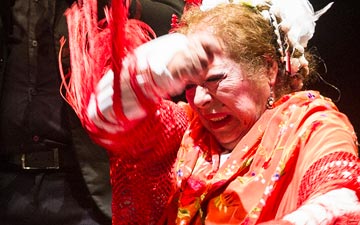
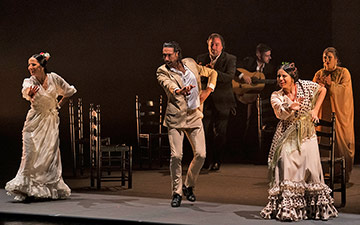
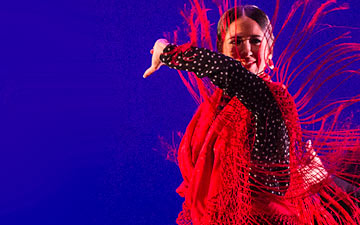

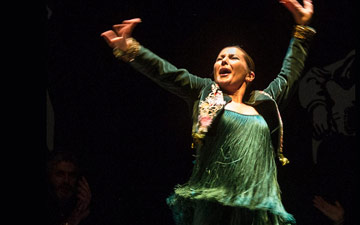
You must be logged in to post a comment.